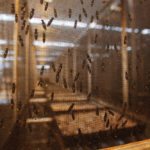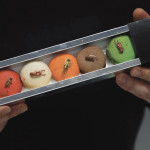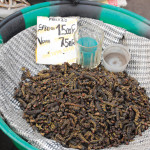Layers of squirming black soldier fly larvae fill large aluminum bins stacked 10 high in a warehouse outside of Vancouver. They are feeding on stale bread, rotting mangoes, overripe cantaloupe and squishy zucchini. But this is no garbage dump. It’s a farm. Enterra Feed, one of an emerging crop of insect growers, will process the












